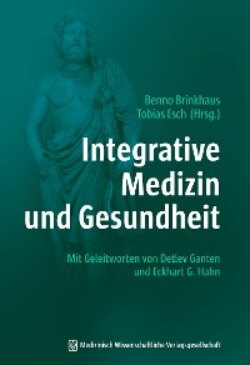Читать книгу Integrative Medizin und Gesundheit - Группа авторов - Страница 42
The Internal Reform Effort: From Volume to Value
ОглавлениеAnother basis of the non-integrative models stemmed from a deeper cause: namely, the so-called “perverse incentives” in the medical industry. The fee-for-service, volume orientation influences hospitals to produce more high-cost, tertiary care procedures and surgeries. Similarly, though counter intuitive, insurers in the US structure, paid as they are on essentially a percentage of premiums, earn more over the long run the higher the costs of care (U.S. Centers for Medicare & Medicaid Services 2020). Neither stakeholder was attracted to rapid uptake of time-intensive, relatively low cost, preventive and lifestyle-oriented integrative service providers whose adherents claimed that more use of their services might reduce the need for high-margin procedures and surgeries.
The potential for openness to integrative strategies in the dominant payment and delivery organizations began to shift as the mainstream of medicine began to reckon with soaring costs – more than double the per capita of most other nations – and with the evidence of harm and inefficiencies. The turning point was the publication from the then Institute of Medicine at the National Academy of Sciences in 2000 of To Err is Human. The report documents that roughly 100,000 people each year were dying from the regular practice of medicine (Kohn et al. 2000). As noted in the introduction, a 2015 estimate put this mortality much higher.
This year 2000 report awakened a reform movement in the dominant school of medicine. Leaders targeting unraveling the causes. Among those called out: the focus on production of services; prioritizing specialty care over primary care; failing to have the patient at the center of care; a top-down medical hierarchy marked by interprofessional abuses; and eventually, realization that the focus needed to shift from merely the management of disease to addressing behavioral and social determinants of health. By the mid-teens, outcomes like wellbeing, resilience and creating health entered the dominant school of medicine’s lexicon (Weinstock 2013; Weeks 2018a). The movement was branded as “from volume to value.” The key values were identified as a Triple Aim: better patient experience, lower costs, and enhance population health. A fourth was quickly added in recognition of the high levels of burnout and suicide in medicine, which was to also enhance the experience of practitioners.
The new values of the movement had remarkable alignment with those of the integrative health movement (s. Table 2). The reform efforts proved to be – to paraphrase songwriter Leonard Cohen’s description of the “cracks in everything, where the light gets in” – openings for Integrative Medicine practices and practitioners to enter more directly into influencing the dominant medical paradigm. The movement for value-based medicine energized the Era 4 movement for Integrative Medicine to form more powerful collaborations and the Era 5 era of convergence.
Tab. 2 Convergence of Interest: Integrative Health and Value-Based Medicine
| Integrative Health | Value-Based Medicine |
| Use of complementary practices and practitioners | Interprofessionalism and team care |
| Individualized (biochemical individuality) | Personalized medicine; patient-centered |
| Focus on lifestyle change (diet, sleep, exercise, stress, self-care) | Focus on behavioral determinants of health |
| Multimodal, mind body-spirit approaches | Chronic disease models |
| Effectiveness focus | Patient centered outcomes |
| Proactive health and wellness orientation (vs reactivity to disease) | Well-being, resilience and “health creation” |
